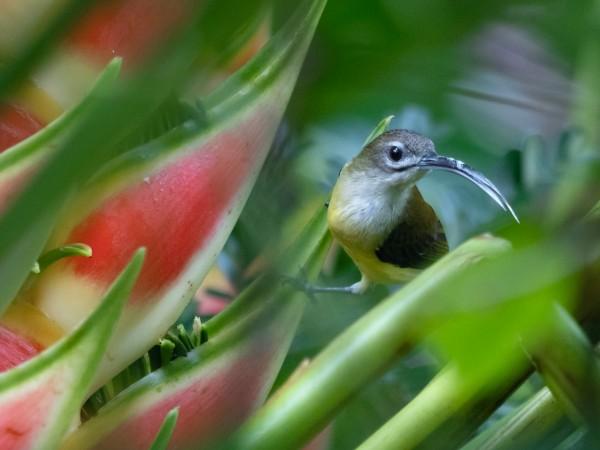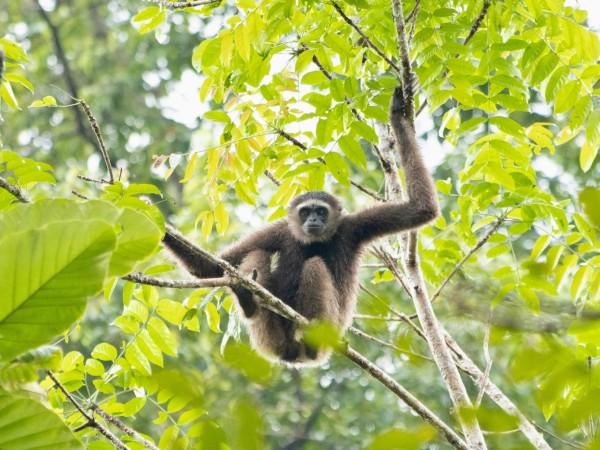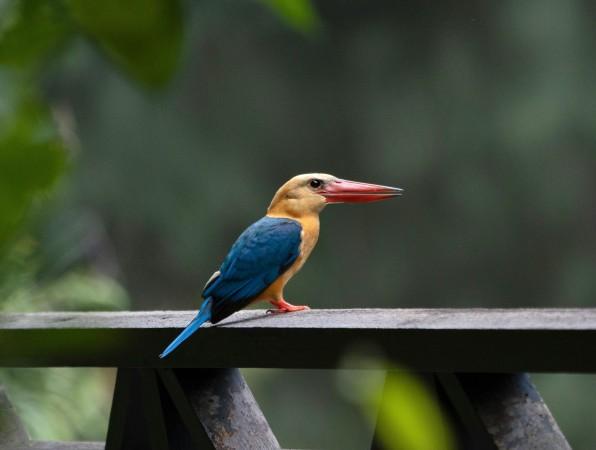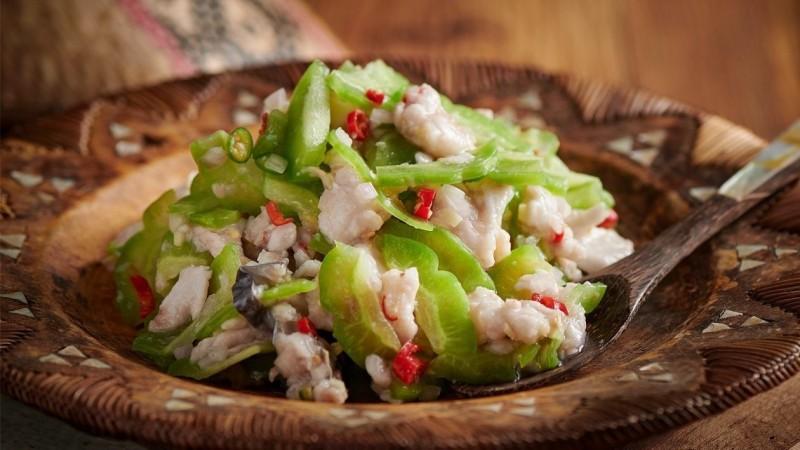Explore Sepilok - Malaysia Travel, Asia
Tucked away in the heart of Sabah, Malaysian Borneo, Sepilok is a paradise for eco-travelers. This small settlement, only 25 kilometers from Sandakan, has become world-famous for its Sepilok Orangutan Rehabilitation Centre. Here, visitors can witness endangered orangutans learning to live wild again. Beyond the orangutans, Sepilok offers rich rainforest landscapes, diverse wildlife, and a strong commitment to eco-tourism.
Population: Sepilok is a small town. The population here is not documented.
Economy: Sepilok’s economy thrives mainly on eco-tourism and conservation efforts. Beyond tourism, the surrounding region supports agriculture, particularly palm oil plantations and small-scale farming.
Landmarks: Famous for the Sepilok Orangutan Rehabilitation Centre, Bornean Sun Bear Conservation Centre, and the Rainforest Discovery Centre (RDC).
Malaysia

Overview of Sepilok
History & Cultural Influence
Sepilok’s story is deeply tied to conservation. In 1964, the Sepilok Orangutan Rehabilitation Centre opened to rescue orphaned and displaced orangutans. It quickly gained global recognition as one of the first sanctuaries of its kind, shaping Sepilok into an international hub for wildlife conservation.
But Sepilok is more than conservation history. Its cultural roots stretch back centuries, shaped by the indigenous peoples of Sabah. The Bajau, once called the “Sea Gypsies,” are famed for fishing traditions, while the Murut are remembered for their warrior past and unique longhouse architecture. Colonial influences also left their mark. Sandakan was once a major trading port under British North Borneo rule, and this legacy can still be seen in the area’s mix of architecture, language, and cuisine.
Interaction with the Locals
One of the joys of traveling to Sepilok is meeting its people. The locals are known for their warmth and hospitality, with many residents also active in community-based tourism, ensuring that travel brings benefits to both visitors and locals. Travelers can connect with the community through homestays, village tours, and handicraft workshops. These experiences allow you to learn traditional cooking, weaving, and farming methods passed down through generations.

Top Attractions in Sepilok
Sepilok Orangutan Rehabilitation Centre
No trip to Sepilok is complete without visiting this world-famous sanctuary. Established in 1964, the Sepilok Orangutan Rehabilitation Centre rescues and rehabilitates orphaned orangutans before releasing them back into the wild. You can witness semi-wild orangutans during feeding times, observe their playful behavior on the nursery platform, and learn about their journey toward independence.
Bornean Sun Bear Conservation Centre
Located right next to the orangutan center, this facility offers a close-up look at the world’s smallest bear—the Malayan sun bear. The Bornean Sun Bear Conservation Centre (BSBCC) is dedicated to protecting these endangered animals through rescue, education, and research. Raised platforms and viewing decks provide excellent photo opportunities.
Rainforest Discovery Centre (RDC)
This is Sepilok’s best-kept secret for eco-education and biodiversity. The Rainforest Discovery Centre features a 347-meter canopy walkway, allowing you to walk among treetops. It's a paradise for birdwatchers, with over 300 species spotted here, including the Bornean bristlehead. There’s also a botanical garden, an orchid house, and educational exhibits about Sabah’s rainforest ecosystem.
Kinabatangan River Safari
While not in Sepilok itself, the Kinabatangan River is just a short journey away and well worth the trip. It’s one of the best places in Southeast Asia to see wildlife in its natural habitat. River cruises offer sightings of proboscis monkeys, pygmy elephants, hornbills, and even wild orangutans.
Sandakan Memorial Park
Take a moment to reflect at the Sandakan Memorial Park, situated just a short drive from Sepilok. It commemorates the lives lost during the Sandakan Death Marches of World War II. Peaceful and moving, the park blends natural beauty with history.

Must-Try Dishes in Sepilok
- Hinava: The signature dish of Sabah, hinava is a raw fish salad mixed with lime juice, ginger, chili, and grated Bambangan seed. Fresh and tangy, it’s often compared to ceviche but carries a unique Bornean twist.
- Bambangan: This seasonal fruit is known as “Sabah’s golden treasure.” Pickled or cooked with sambal, bambangan delivers a sour, earthy flavor that pairs perfectly with rice.
- Tuhau: Tuhau is a traditional side dish made from wild ginger stems, diced finely and mixed with lime, chili, and shrimp paste. Its pungent aroma might surprise newcomers, but locals love its strong flavor.
- Pinasakan Sada: A beloved Kadazan-Dusun dish, pinasakan sada is made by simmering fish (often mackerel) with takob-akob (a sour fruit), turmeric, and bambangan seed. The result is a savory and slightly sour stew best enjoyed with rice.
- Latok: This refreshing dish uses sea grapes, a type of seaweed eaten raw with lime juice and chili. Crunchy and salty, latok is popular among coastal communities and often served as a side dish.
- Ngiu Chap: A comfort food with Chinese influence, ngiu chap means “mixed beef.” It combines beef slices, tripe, tendon, and meatballs in a rich herbal broth with noodles.
- Tuaran Mee: Originating from the town of Tuaran, this dish features egg noodles wok-fried with char siu pork, vegetables, and egg. Known for its springy texture, Tuaran Mee is a local favorite that has spread across Sabah.
- Linopot: Linopot is rice wrapped in leaves, often served with side dishes like smoked fish, wild vegetables, or pickled fruits. Traditionally prepared for journeys, it reflects the ingenuity of indigenous communities.
- Exotic Fruits of Borneo: No meal in Sabah is complete without tropical fruits. Try durian (the king of fruits), rambutan, or mangosteen, often sold in local markets around Sandakan.

Festivals & Local Celebrations
Kaamatan (Harvest Festival)
Held every May, the Kaamatan Festival is the most important celebration for the Kadazan-Dusun people. It honors Bambaazon, the spirit of rice, with traditional dances, gong music, and cultural performances. Visitors can enjoy local food, sip rice wine called tapai, and watch the Unduk Ngadau beauty pageant, which celebrates women’s grace and heritage.
Hari Raya Aidilfitri
After the fasting month of Ramadan, the Muslim community in Sepilok and Sandakan celebrates Hari Raya Aidilfitri. Families open their homes to guests with feasts of rendang, ketupat, and kuih raya (festive cookies). Travelers visiting during this time will be warmly welcomed to share meals and exchange greetings of “Selamat Hari Raya.”
Chinese New Year
The Chinese community around Sandakan brings color and energy to the Chinese New Year, usually in January or February. Celebrations feature lion dances, firecrackers, red lanterns, and delicious dishes symbolizing prosperity. It’s one of the liveliest times to visit the region.

What to Do in Sepilok
- Wildlife Encounters: Start your day with a visit to the Sepilok Orangutan Rehabilitation Centre to watch orangutans during feeding time. Then head next door to the Bornean Sun Bear Conservation Centre to observe these playful yet shy creatures. For birdwatchers, the Rainforest Discovery Centre (RDC) is a must, with over 300 bird species, including hornbills and the rare Bornean bristlehead.
- Night Jungle Walks: At night, Sepilok’s rainforest comes alive. Guided walks reveal nocturnal creatures such as slow lorises, civets, and tree frogs. The thrill of hearing insects buzz and spotting glowing fungi makes this a memorable adventure.
- River Cruises and Mangrove Tours: A short trip from Sepilok brings you to the Kinabatangan River, where river safaris offer chances to see proboscis monkeys, pygmy elephants, and crocodiles in their natural setting. Mangrove tours near Sandakan also highlight the region’s rich ecosystem.
- Eco-Volunteering Programs: For travelers who want to give back, Sepilok offers eco-volunteering opportunities. Programs range from tree-planting to assisting conservation centers. These experiences help protect the environment while offering visitors a deeper connection to local efforts.
Shopping in Sepilok
- Handicrafts and Souvenirs: Local markets offer woven baskets, beadwork jewelry, and batik fabrics, each reflecting the artistry of Sabah’s indigenous groups. These make perfect keepsakes or gifts while directly supporting local livelihoods.
- Eco-Friendly Products: Conservation-linked shops sell eco-friendly souvenirs such as reusable bamboo straws, tote bags, and educational books about Borneo’s wildlife. Purchasing these items helps fund conservation projects.
- Local Food Products: Markets and small shops also sell dried seafood, Sabah tea, Tenom coffee, and local snacks like kuih cincin (ring-shaped cookies). These edible souvenirs give travelers a taste of Sabah even after they return home.
- Modern Shopping in Sandakan: For more convenience, Sandakan has shopping malls where travelers can find clothing, electronics, and modern amenities. Though not unique to the region, they provide comfort for those who need essentials during their trip.

Weather in Sepilok: Best Time to Visit
Average daily temperatures range between 24°C to 32°C (75°F – 90°F) and the level of humidity is above 80%, creating lush rainforest conditions.
Dry Season in Sepilok (April – October)
This is considered the best time to visit Sepilok. Rain is lighter, trails are easier to walk, and wildlife viewing is excellent. Birdwatching at the Rainforest Discovery Centre is especially rewarding during these months.
Wet Season in Sepilok (November – March)
Expect heavier rainfall, particularly in December and January. While the showers can be intense, the rainforest looks its most vibrant. Some travelers even enjoy the dramatic thunderstorms as part of the Borneo experience. Just be prepared with ponchos, waterproof shoes, and patience.

Essential Travel Information
Getting Around Sepilok
- Taxi and Grab: In Sandakan and Sepilok, taxis and Grab (Malaysia’s ride-hailing app) are the most convenient ways to get around.
- Shuttle Vans and Private Transfers: Many lodges and hotels in Sepilok offer transfer services from the airport or Sandakan town.
- Walking and Biking: Attractions in Sepilok are often within walking or cycling distance, especially if you're staying nearby.
ATM & Banking Services
There are no ATMs directly in Sepilok, so it’s best to withdraw cash in Sandakan town before heading to the rainforest area. ATMs in Sandakan accept major international cards like Visa, Mastercard, and UnionPay. Most attractions, food stalls, and local transport in Sepilok only accept cash. A few larger lodges or eco-resorts may accept credit or debit cards, but always confirm in advance.
Where to Stay in Sepilok
- Jungle Lodges and Eco-Resorts: Nature lovers will enjoy staying at one of Sepilok’s eco-lodges. These are usually located near the Sepilok Orangutan Rehabilitation Centre and offer immersive rainforest experiences with walking trails, nature sounds, and wildlife just outside your window.
- Guesthouses: For travelers seeking comfort without luxury pricing, Sepilok has guesthouses and homestays that offer air-conditioned rooms, home-cooked meals, and warm hospitality. These are perfect for families or long-term nature enthusiasts.
- Luxury Hotels in Sandakan: If you prefer more amenities like swimming pools, spas, or conference rooms, stay in Sandakan town, just 30 minutes away. It provides quick access to Sepilok during the day while offering urban comfort by night.
Articles for you

Explore Yala National Park - Sri Lanka Travel, Asia
Tucked away in Sri Lanka’s southeastern corner, Yala National Park is where wild nature meets deep tradition. Known worldwide for its leopard population, the park is also home to elephants, sloth bears, crocodiles, and hundreds of bird species. Beyond wildlife, Yala opens doors to a cultural landscape dotted with ancient temples, Buddhist ruins, and coastal villages. For travelers seeking more than just a safari, Yala offers a chance to explore eco-tourism, local communities, and sacred heritage sites.
Population: The Yala National Park area doesn’t have a human population.
Economy: The economy around Yala National Park thrives on a blend of eco-tourism, agriculture, and local services. Safari tours, eco-lodges, and cultural experiences drive steady income for nearby towns like Tissamaharama and Kataragama, supporting thousands of families.
Landmarks: Famous for Block I of Yala and wildlife encounters, including elephants, sloth bears, crocodiles, and exotic bird species.

Explore Galle - Sri Lanka Travel, Asia
Nestled on Sri Lanka’s southern coastline, Galle is a vibrant city where history meets the sea. Its cobbled streets, colonial architecture, and serene beaches make it a must-visit destination for travelers seeking a blend of culture, adventure, and relaxation. A UNESCO World Heritage site, Galle captivates visitors with its Dutch Fort, bustling markets, and friendly locals. Whether you’re exploring the ramparts at sunset or savoring fresh seafood by the shore, Galle promises an unforgettable journey into Sri Lanka’s heritage.
Population: Approximately 113,000 in 2023.
Economy: Galle’s economy thrives on tourism, trade, and fisheries. The city’s historic fort, colonial architecture, and coastal charm draw thousands of international visitors each year, making tourism its main economic driver. Fishing remains vital for local livelihoods, supplying fresh seafood across the region.
Landmarks: Famous for the Galle Fort, Dutch Reformed Church & Maritime Museum, and Unawatuna Beach.

Explore Bentota - Sri Lanka Travel, Asia
Nestled along Sri Lanka’s southwestern coast, Bentota is a tropical paradise that blends golden beaches, vibrant culture, and thrilling adventures. Famous for its calm waters, luxury resorts, and scenic river estuary, Bentota has become a top destination for travelers seeking both relaxation and authentic experiences. From serene beach walks at sunrise to adrenaline-pumping water sports, this coastal town offers a perfect balance of leisure and exploration. With its proximity to Colombo and Galle, Bentota is easy to reach, making it an ideal stop for both short escapes and extended holidays.
Population: Approximately 37,000 in 2023.
Economy: Bentota’s economy thrives mainly on tourism, which drives local businesses such as hotels, restaurants, and wellness retreats. The town also benefits from fishing, coconut cultivation, and handicrafts like wood carving and batik textiles. Many residents rely on the growing demand for water sports and Ayurvedic treatments, making tourism the backbone of both income and employment in the area.
Landmarks: Famous for Bentota Beach, Bentota River Safari, and Kande Vihara Temple.

Explore Mirissa - Sri Lanka Travel, Asia
Mirissa is a charming coastal town on Sri Lanka’s southern shoreline. Known for its golden beaches, turquoise waters, and vibrant marine life, it has become a must-visit stop for travelers exploring the island. Many come for whale watching, surfing, and sunset views at Coconut Tree Hill, but Mirissa offers much more than postcard beauty. The fishing boats you see anchored by the bay carry generations of stories. Local traditions, delicious cuisine, and a laid-back rhythm of life shape every visitor’s experience.
Population: Approximately 4,700 in 2023.
Economy: Mirissa’s economy is largely shaped by its coastal location. Fishing has long been the backbone of local livelihoods, with generations relying on the Indian Ocean for income. In recent decades, tourism has become the main driver of growth, thanks to whale watching, surfing, and beachside hospitality.
Landmarks: Famous for Mirissa Beach, Coconut Tree Hill, and Parrot Rock Bridge.

Explore Nuwara Eliya - Sri Lanka Travel, Asia
Tucked away in the Central Highlands of Sri Lanka, Nuwara Eliya is often called “Little England”. With its rolling tea plantations, cool misty mornings, and colonial charm, this mountain town feels like a step into another world. Travelers come here to breathe fresh air, walk through flower gardens, sip the finest Ceylon Tea, and enjoy a pace of life far from the island’s busy cities. Whether you’re drawn by scenic landscapes, heritage architecture, or the warmth of its people, Nuwara Eliya is a destination that blends nature, culture, and history in perfect harmony.
Population: Approximately 781,000 in 2023.
Economy: Nuwara Eliya’s economy thrives mainly on tea production, as it sits in the heart of Sri Lanka’s central highlands, famous worldwide for Ceylon Tea. The city also benefits from a growing tourism industry, attracting visitors with its colonial charm, cool climate, and scenic landscapes.
Landmarks: Famous for Gregory Lake, Hakgala Botanical Garden, and Victoria Park.

Explore Sukau - Malaysia Travel, Asia
Nestled on the banks of the Kinabatangan River in Sabah, Malaysian Borneo, Sukau is a destination where wildlife, culture, and conservation come together. Known as one of Asia’s top spots for river safaris and eco-tourism, this quiet village offers a front-row seat to encounters with Bornean orangutans, pygmy elephants, proboscis monkeys, and exotic birdlife.
Population: Approximately 1,400 in 2019.
Economy: Sukau’s economy is shaped by its riverine location and natural resources. Traditionally, the Orang Sungai community relied on fishing, small-scale farming, and forest gathering for their livelihood. Today, the village has shifted toward eco-tourism, with river cruises, jungle trekking, and homestays providing income.
Landmarks: Famous for the Kinabatangan River cruises, Gomantong Caves, and Ox-bow lakes and wetlands.
